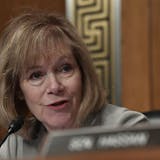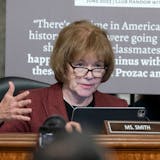BEIJING — When the NHL opted out of the Olympics in December because of COVID-19 issues that led to a slew of postponed games, USA Hockey turned to the college ranks to assemble its team.
The kids had no problems opting in, regardless of concerns at the time about how infected athletes would be treated at the Beijing Games.
"I just thought about the opportunity ahead of me," Gophers forward Matthew Knies said. "I think this is a once-in-a-lifetime [experience]. I don't think many kids get this chance to be on an Olympic team and to represent USA hockey."
The average age is 25, making this the youngest U.S. men's hockey Olympic team since the 1994 Games in Lillehammer, the last before professionals started playing. After adding NHL players to the roster, the U.S. won silver medals in 2002 and 2010 but hasn't medaled since.
The Wild's Bill Guerin was set to be general manager of Team USA, but when the NHL bailed out, the task of putting the team together fell to USA Hockey executive John Vanbiesbrouck and coach David Quinn. Their new group stepped up for the USA cause in Beijing instead of worrying about COVID protocols. Now that the team has been selected, arrived and had some practices under its belt — including a scrimmage against Canada on Monday — there's a significant question that has to be asked.
Do these kids realize what they have gotten themselves into?
This is not virus-related. Knies wasn't the only player who admitted he jumped at the chance to put on the Stars and Stripes. This is about life and hockey experience.
North Dakota defenseman Jake Sanderson, at 19 years and three months, is the youngest player on Team USA. Former Wild player Eric Staal is 37 years old, has played 17 NHL seasons, and will be Canada's captain, but the Canadians also have No. 1 overall pick Owen Power — 19 years and 2 months old — on defense. We're talking about a generation gap on all levels.


